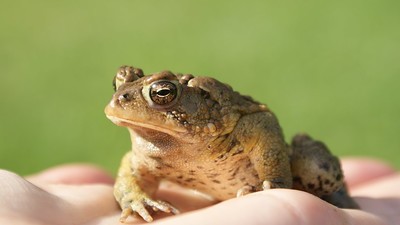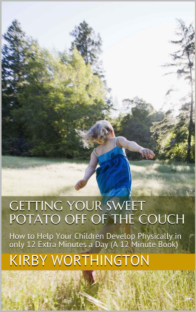Teaching a tired and hungry child is like trying to get a toad to smile.
 Depending on our personality and energy level, we parents often stack the calendar to run the errands all at once. However, with young children in tow this can backfire and have knock-on effects. (Though remember, all children are different.) Their mood can change as quickly as a faucet turns on or off. A meltdown often comes without warning. Sometimes, though, there are tell-tale signs in their body language. The key is to stop before they crash, and the key to that is to know your child.
Depending on our personality and energy level, we parents often stack the calendar to run the errands all at once. However, with young children in tow this can backfire and have knock-on effects. (Though remember, all children are different.) Their mood can change as quickly as a faucet turns on or off. A meltdown often comes without warning. Sometimes, though, there are tell-tale signs in their body language. The key is to stop before they crash, and the key to that is to know your child.
Know when your child’s energy is gone, or nearly gone. Some children’s metabolism may need a regular snack to keep them going. It is highly recommended to have some healthy snacks on hand wherever you go. When you are aware of your child’s needs, you will be able to pull out some raisins or pretzels in the car, or some cheese or “fairy sandwiches” at home. There’s fresh fruit, of course. And fresh vegetables such as carrots or celery sticks are good options as well. Hey, even canned cut green beans can work!
But not every case of the grumps is from hunger. Sometimes if they are not sure how long your errands will last they can begin to get agitated. As you may recall from previous posts, children thrive on routine, on knowing what to expect. So even if you are a more unscheduled kind of person, find some sort of balance for the both of you so your child has some sense of what’s coming next – or when it all will end. This will help you discern when their grumps are coming from a crazy schedule or simply from tired hunger (“tunger”? Which can make them “hangry”).
But we also don’t want to create emotional eaters, so here are two things to keep in mind:
- Check your schedule and purposefully try not to pack it out past the point of your child’s ability to cope.
- Make sure you’re able to meet their needs. If it’s hunger, try to meet that need with something healthy. If it’s not hunger, don’t use food.
So how can you make such distinctions and decisions? Take any behavior that needs changing – temper tantrums, whining, etc. – and pay attention to when it happens and how it starts to happen. You may notice patterns that give you a hint at the energy levels, body rhythms, and physical needs of your child. If needed, even keep a written record of the times for wake up, eating, eliminating, tiredness, higher energy levels, napping, etc. and make a chart to get a better picture of these rhythms.
How does this relate to learning?
Not only can all of this help your errand times go more smoothly, but children learn best when they are well rested, well fed, and happy. This is the best environment and time to help a child learn anything. If we take care of their physical needs – such as sleep and food – other things, like learning, will go more smoothly. But remember, kids are different from each other. Some children are “high maintenance”, not in a negative sense, but in that they need lots of rest and more frequent rest or they will burn out quickly. Others can go and go and go before they fizzle. Think of them like types of fire wood. Like dry tinder, “high maintenance” kids’ energy burns fast and goes out quickly. Other kids have energy like kindling, which is a bit thicker than tinder, taking a bit longer to burn out and lasting a bit longer. Lastly others can have energy like logs, lasting the longest before even starting to burn out. As far as percentages, it is like a bell curve: most children would be kindling (in the middle) and fewer children would be tinder or logs (the two extremes).
By accepting you will be accessing a service provided by a third-party external to https://growthandgiggles.com/

